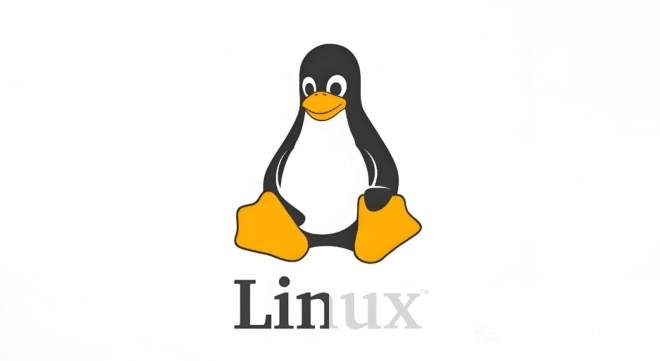To optimize SSD performance on Linux, first enable TRIM by checking support with sudo hdparm -I /dev/sdX | grep TRIM, then ensure the weekly fstrim timer is active with systemctl status fstrim.timer, or enable it manually using sudo systemctl enable fstrim.timer, and optionally use manual trimming via sudo fstrim -av; second, optimize mount options in /etc/fstab by adding noatime and avoiding relatime to reduce writes, using defaults,noatime for periodic TRIM or adding discard only if real-time TRIM is desired; third, select the appropriate I/O scheduler by checking current settings via cat /sys/block/sdX/queue/scheduler and setting none for NVMe or kyber/mq-deadline for SATA SSDs, making it permanent by adding elevator=none to GRUB boot parameters and running sudo update-grub; fourth, reduce unnecessary writes by mounting /tmp and /var/log as tmpfs with entries in /etc/fstab, limiting journal size in /etc/systemd/journald.conf to SystemMaxUse=100M, and minimizing swap usage by either disabling it or enabling zram with sudo systemctl enable --now systemd-zram-setup@zram0; fifth, choose SSD-friendly filesystems like ext4 with mkfs.ext4 -E discard, XFS for high throughput, or Btrfs with compression while avoiding defragmentation; finally, monitor SSD health regularly using sudo smartctl -a /dev/sdX after installing smartmontools, checking attributes like Percentage Used for NVMe or Media_Wearout_Indicator for SATA, ensuring the drive remains healthy and performs optimally over time.

Solid State Drives (SSDs) offer faster read/write speeds and lower latency than traditional hard drives, but to get the most out of them on Linux, a few optimizations are essential. Without proper tuning, you may not fully leverage the performance benefits—or worse, risk reduced lifespan due to unnecessary wear. Here’s how to optimize SSD performance on a Linux system.

1. Enable TRIM for Garbage Collection
SSDs perform best when they know which blocks are no longer in use. The TRIM command allows the OS to inform the SSD which data blocks can be wiped internally, improving write performance and longevity.
Check if your SSD supports TRIM:

sudo hdparm -I /dev/sdX | grep TRIM
Enable periodic TRIM (weekly on most distros):
Most modern Linux distributions enable fstrim weekly via a systemd timer.
Check if it's active:

systemctl status fstrim.timer
Manually run TRIM:
sudo fstrim -av
Enable automatic TRIM (if not already):
sudo systemctl enable fstrim.timer
? Note: For continuous TRIM, you can mount with the
discardoption in/etc/fstab, but this can cause performance overhead. Periodic TRIM is generally preferred.
2. Optimize Mount Options in /etc/fstab
Tweaking filesystem mount options can reduce write amplification and improve performance.
Edit /etc/fstab and add these options for your SSD partitions:
defaults,noatime,discard
Or, if you're using periodic TRIM instead of real-time:
defaults,noatime
noatime: Prevents the system from updating file access times on every read, reducing unnecessary writes.discard: Enables online TRIM (use with caution—better to rely onfstrimtimer).
Example line:
UUID=abcd-1234 / ext4 defaults,noatime 0 1
?? Avoid
relatimeif you want maximum write reduction—noatimeis better for SSDs unless you specifically need access time tracking.
3. Choose the Right I/O Scheduler
The I/O scheduler manages how read/write requests are sent to the storage device. SSDs don’t benefit from complex reordering like HDDs.
Common schedulers: none, mq-deadline, kyber, bfq.
For SSDs, especially NVMe, use:
none(akanonefor blk-mq devices) – Best for NVMe and high-performance SSDs.kyberormq-deadline– Good for SATA SSDs with multi-queue support.
Check current scheduler:
cat /sys/block/sdX/queue/scheduler
Temporarily set scheduler (e.g., for nvme0n1):
echo none | sudo tee /sys/block/nvme0n1/queue/scheduler
Make it permanent:
Use kernel boot parameters via GRUB:
elevator=none
Add this to GRUB_CMDLINE_LINUX in /etc/default/grub, then run:
sudo update-grub
4. Reduce Unnecessary Writes
Minimizing writes extends SSD life and maintains performance.
Move temporary directories to RAM:
Use tmpfs for /tmp, /var/log, or browser caches.
Add to /etc/fstab:
tmpfs /tmp tmpfs defaults,noatime,nosuid,size=2G 0 0 tmpfs /var/log tmpfs defaults,noatime,nosuid,size=512M 0 0
?? Ensure adequate RAM and consider log persistence if needed.
Limit journal logging:
Reduce systemd journal size in /etc/systemd/journald.conf:
SystemMaxUse=100M
Avoid swap (or use zram):
If you have enough RAM, disable swap or use compressed RAM instead:
sudo systemctl disable --now dev-sda2.swap # if using swap partition
Or enable zram:
sudo systemctl enable --now systemd-zram-setup@zram0
5. Filesystem Choice and Formatting
Use modern filesystems optimized for SSDs:
- ext4: Reliable, widely supported. Enable options:
mkfs.ext4 -E discard /dev/sdX
- XFS: Great for large files and high throughput.
- Btrfs: Offers built-in compression (
compress=zstd) and copy-on-write, but use with caution on critical systems.
Avoid excessive defragmentation—SSDs don’t need it. Filesystems like ext4 and XFS handle fragmentation well.
Bonus: Monitor SSD Health
Use smartctl to check health and wear:
sudo smartctl -a /dev/sdX
Look for:
-
Percentage Used(NVMe) -
Wear_Leveling_CountorMedia_Wearout_Indicator(SATA)
Install smartmontools if not present.
Optimizing SSD performance on Linux isn’t complicated, but it does require attention to mount options, TRIM, I/O scheduling, and minimizing writes. With these tweaks, your SSD will stay fast and last longer. Basically, just trim regularly, use noatime, pick the right scheduler, and avoid writing unnecessary data.
The above is the detailed content of Optimizing SSD Performance on a Linux System. For more information, please follow other related articles on the PHP Chinese website!

Hot AI Tools

Undress AI Tool
Undress images for free

Undresser.AI Undress
AI-powered app for creating realistic nude photos

AI Clothes Remover
Online AI tool for removing clothes from photos.

Clothoff.io
AI clothes remover

Video Face Swap
Swap faces in any video effortlessly with our completely free AI face swap tool!

Hot Article

Hot Tools

Notepad++7.3.1
Easy-to-use and free code editor

SublimeText3 Chinese version
Chinese version, very easy to use

Zend Studio 13.0.1
Powerful PHP integrated development environment

Dreamweaver CS6
Visual web development tools

SublimeText3 Mac version
God-level code editing software (SublimeText3)
 How does the cost of ownership differ between Linux and Windows?
Jun 09, 2025 am 12:17 AM
How does the cost of ownership differ between Linux and Windows?
Jun 09, 2025 am 12:17 AM
Linux's cost of ownership is usually lower than Windows. 1) Linux does not require license fees, saving a lot of costs, while Windows requires purchasing a license. 2) Linux has low hardware requirements and can extend the service life of the device. 3) The Linux community provides free support to reduce maintenance costs. 4) Linux is highly secure and reduces productivity losses. 5) The Linux learning curve is steep, but Windows is easier to use. The choice should be based on specific needs and budget.
 How does the performance of I/O operations differ between Linux and Windows?
Jun 07, 2025 am 12:06 AM
How does the performance of I/O operations differ between Linux and Windows?
Jun 07, 2025 am 12:06 AM
LinuxoftenoutperformsWindowsinI/Operformanceduetoitscustomizablekernelandfilesystems,whileWindowsoffersmoreuniformperformanceacrosshardware.1)LinuxexcelswithcustomizableI/OschedulerslikeCFQandDeadline,enhancingperformanceinhigh-throughputapplications
 How to install Linux alongside Windows (dual boot)?
Jun 18, 2025 am 12:19 AM
How to install Linux alongside Windows (dual boot)?
Jun 18, 2025 am 12:19 AM
The key to installing dual systems in Linux and Windows is partitioning and boot settings. 1. Preparation includes backing up data and compressing existing partitions to make space; 2. Use Ventoy or Rufus to make Linux boot USB disk, recommend Ubuntu; 3. Select "Coexist with other systems" or manually partition during installation (/at least 20GB, /home remaining space, swap optional); 4. Check the installation of third-party drivers to avoid hardware problems; 5. If you do not enter the Grub boot menu after installation, you can use boot-repair to repair the boot or adjust the BIOS startup sequence. As long as the steps are clear and the operation is done properly, the whole process is not complicated.
 How to enable the EPEL (Extra Packages for Enterprise Linux) repository?
Jun 17, 2025 am 09:15 AM
How to enable the EPEL (Extra Packages for Enterprise Linux) repository?
Jun 17, 2025 am 09:15 AM
The key to enabling EPEL repository is to select the correct installation method according to the system version. First, confirm the system type and version, and use the command cat/etc/os-release to obtain information; second, enable EPEL through dnfinstallepel-release on CentOS/RockyLinux, and the 8 and 9 version commands are the same; third, you need to manually download the corresponding version of the .repo file and install it on RHEL; fourth, you can re-import the GPG key when encountering problems. Note that the old version may not be supported, and you can also consider enabling epel-next to obtain the test package. After completing the above steps, use dnfrepolist to verify that the EPEL repository is successfully added.
 How does Linux perform compared to Windows for web server workloads?
Jun 08, 2025 am 12:18 AM
How does Linux perform compared to Windows for web server workloads?
Jun 08, 2025 am 12:18 AM
Linux usually performs better in web server performance, mainly due to its advantages in kernel optimization, resource management and open source ecosystem. 1) After years of optimization of the Linux kernel, mechanisms such as epoll and kqueue make it more efficient in handling high concurrent requests. 2) Linux provides fine-grained resource management tools such as cgroups. 3) The open source community continuously optimizes Linux performance, and many high-performance web servers such as Nginx are developed on Linux. By contrast, Windows performs well when handling ASP.NET applications and provides better development tools and commercial support.
 How to choose a Linux distro for a beginner?
Jun 19, 2025 am 12:09 AM
How to choose a Linux distro for a beginner?
Jun 19, 2025 am 12:09 AM
Newbie users should first clarify their usage requirements when choosing a Linux distribution. 1. Choose Ubuntu or LinuxMint for daily use; programming and development are suitable for Manjaro or Fedora; use Lubuntu and other lightweight systems for old devices; recommend CentOSStream or Debian to learn the underlying principles. 2. Stability is preferred for UbuntuLTS or Debian; you can choose Arch or Manjaro to pursue new features. 3. In terms of community support, Ubuntu and LinuxMint are rich in resources, and Arch documents are technically oriented. 4. In terms of installation difficulty, Ubuntu and LinuxMint are relatively simple, and Arch is suitable for those with basic needs. It is recommended to try it first and then decide.
 How to add a new disk to Linux
Jun 27, 2025 am 12:15 AM
How to add a new disk to Linux
Jun 27, 2025 am 12:15 AM
The steps to add a new hard disk to the Linux system are as follows: 1. Confirm that the hard disk is recognized and use lsblk or fdisk-l to check; 2. Use fdisk or parted partitions, such as fdisk/dev/sdb and create and save; 3. Format the partition to a file system, such as mkfs.ext4/dev/sdb1; 4. Use the mount command for temporary mounts, such as mount/dev/sdb1/mnt/data; 5. Modify /etc/fstab to achieve automatic mount on the computer, and test the mount first to ensure correctness. Be sure to confirm data security before operation to avoid hardware connection problems.
 Fixed the failure to upload files in Windows Google Chrome
Jul 08, 2025 pm 02:33 PM
Fixed the failure to upload files in Windows Google Chrome
Jul 08, 2025 pm 02:33 PM
Have problems uploading files in Google Chrome? This may be annoying, right? Whether you are attaching documents to emails, sharing images on social media, or submitting important files for work or school, a smooth file upload process is crucial. So, it can be frustrating if your file uploads continue to fail in Chrome on Windows PC. If you're not ready to give up your favorite browser, here are some tips for fixes that can't upload files on Windows Google Chrome 1. Start with Universal Repair Before we learn about any advanced troubleshooting tips, it's best to try some of the basic solutions mentioned below. Troubleshooting Internet connection issues: Internet connection






